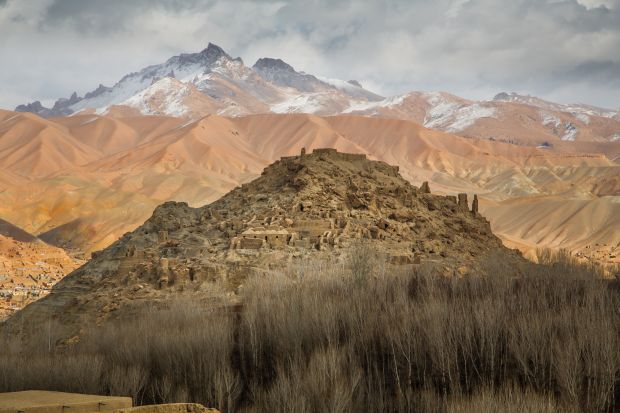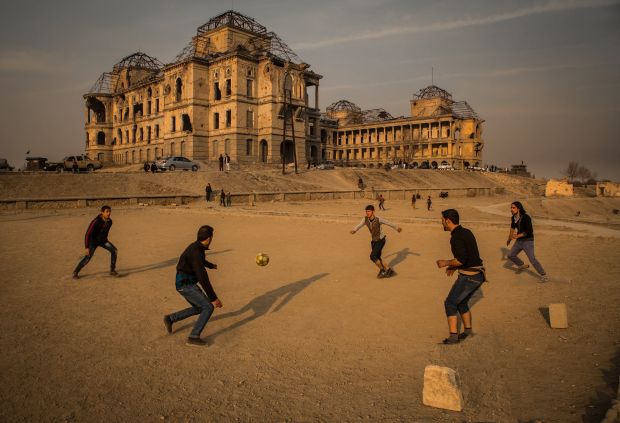“You never know when something’s going to kick off; violence can escalate quickly here. Even something a simple as taking a photograph could cause trouble.”
I hung up the phone and immediately began weighing up the risk. It was 2015 and I'd been invited to Afghanistan to document the fifth annual Afghan Ski Challenge. A back-country race that takes place every spring in Bamyan Province, the challenge draws entrants from all round the world.
I was fairly naïve about Afghanistan and what little knowledge I had was based on news screened almost daily around the world. The negative press highlighted violent attacks against women, suicide bombings and reports from the front lines where solders fight a drawn out war against Islamic insurgents. It hardly sounded like an idyllic holiday, but the chance to visit and photograph in such a fascinating country was simply too good to pass up.
During the month long visit I learned a great deal about documentary photography in difficult environments. Here's three areas to think about before you next get on a plane.

Women rarely participate in sport in Afghanistan. The Afghan Women’s Ski Programme aims to empower women to break free of social restraints. This shot would have been difficult before digital photography, as the women would have been silhouetted against a bright background. Now we can photograph subjects looking into the sun safe in the knowledge that shadows (dark areas) can be brightened in post processing. 5D Mark III, 24mm – 105mm lens, 24mm, 1/1640s, f 16, ISO 250, processed in Adobe Light Room CC – shadows brightened.
Think about what you want to say
Often when people are learning photography they spend a great deal of time navigating their way through the technical maze of shutter speeds, apertures and ISOs. While understanding these concepts is useful, in my opinion its much more important to master the art of composition. This especially rings true for documentary photography.
To be successful and create strong unique images you need to find an edge. Before clicking the shutter, stop and ask yourself, ‘have you got a new and unique angle, are there strong lead in lines, and does the image tell a clear story?’
It is easy to get caught up in all the action and make critical technical errors such as focusing on the wrong area. I always make sure my main point of interest is in focus by using auto focus (AF) to pre-focus on a point and then lock the focus down. Modern DSLR's offer a range of AF points which can be changed using a paddle or touch screen. While this can be a helpful tool, I find it far too slow for anything but landscape work where the camera is on a tripod.
Get into the habit of checking your image is sharp by zooming in on the main point of interest on the LCD screen straight after taking a shot. This can save a lot of tears later when you find the background behind the subject is in focus rather than the main point of interest.
Don’t be afraid to shoot on auto settings (A). Often while in Afghanistan I found that there was so much going on I didn’t have time to use manual settings. I regularly flicked between ‘A’ (automatic mode), ‘P’ (programme mode), ‘S’ or ‘TV’ (shutter priority), and ‘AV’ (aperture priority). I only occasionally used ‘M’ (Manual Mode) for low light shots and when I needed complete control over every aspect of the photograph.
It’s important to slow the process down, see the scene, engage with people, decide what’s most important or what tells the story the best, then take the image. At the end of the day, you only need a handful of images to tell the story. A handful of strong, unique images tell a better story than hundreds of photos showing everything you have seen.

A warm face and a smile goes a long way. Before snapping a photo, try and build rapport with the person. Shake hands, smile, ask permission then finally show them the image on the back of the LCD. If you are staying at the location for a while handing out printed copies is a nice gesture to say thank you but you may well become too popular and have every local wanting to be in your pictures. 5D Mark III, 24mm – 105mm lens, 82mm, 1/400s, f 11, ISO 200, processed in Adobe Light Room CC. Dodging and burning.
Be a people person
Creating strong images of people looking natural and unaffected by the presence of the camera is a challenge that takes time. Before photographing, try and build rapport with the person you’d like to photograph. A warm greeting in the local language goes a long way. Shake hands, smile, and ask permission first. After you have taken the shot, show them the photos on the LCD screen.
If you can, allow enough time to revisit the same location several times. While the locals may raise an eyebrow and wonder about your sanity, your subjects will become used to your presence and relax. As a result they will look more natural and focused on their task, rather than you.
Use your discretion when photographing women, especially in Muslim countries. Many people, in particular older generations, ask that women are not photographed. This can be frustrating for photographers as your images will only show just one sex. When in rural villages and markets its best not to photograph women. It may however be more appropriate at pubic events or where you have permission from friends. Ask the locals or your guide for advice.
While it’s important to know when to photograph, it’s equally important to know when not to photograph. While photographing in Kabul I always went out with an interpreter. I kept my camera well hidden and didn’t photograph unless I felt safe. Blending in as much as possible helps to. In Afghanistan I wore the local Shalwar Kameez clothing of a long darkly coloured robe, thick woolen shawl, long pants and headscarf.

Once you have found your subject, find a new angle. Photographing a building from this angle, rather than at right angles, gives you a more attractive image. 5D Mark III, 24mm-105mm lens, 24mm, 1/200s, F 10, ISO 100, processed in Adobe Light Room CC.
Choose your kit wisely
You can’t go back and retake images, so choose your gear wisely. You want to ensure you have the best gear for the job. In Afghanistan I carried a Canon EOS 5D Mark III with Canon 16-35mm and 24-105mm lenses. I also took a medium weight Dolica Proline tripod with a ball head. While carrying a tripod may seem excessive, I believe it's essential and worth every gram. It allows you to keep shooting in low light and wind, and ensure pin sharp images when you need slower shutter speeds.
While the Canon 5D is considered to be a great workhorse for professional photographers, in hindsight I would have preferred a smaller camera. A bulky DSLR can be intrusive and intimidating. Another good option would be a mirrorless with a range of lenses – they are light, discreet and less intrusive.
Always carry a spare battery and a large memory card as it can be difficult to upload your images to create more space. Your camera is the safest place to store them. I took a Transcend compact flash 128GB card. This gave me more than enough storage to shoot hundreds of frames a day on the month long trip.
I also carried a MacBook Pro laptop with me. Many would consider this a little unconventional but it allowed me to check the images at the end of each day and know for sure if I had got a shot or needed to go back; the small LCD screen on the back of my camera just wasn't enough.
My trip to Afghanistan was one of the richest experiences of my life. Bamyan is a safe haven in a sea of chaos and one of the most stunning places on Earth. We were warmly welcomed by local people and always looked after. Bamyan's crumbling ruins, mountains, and rich culture are all strong drawcards. Of course every photographer wanting to go to a place like Afghanistan needs to weigh up the risks, but in my mind the rewards were worth it. I’d go again in a second.

The City of Screams is a striking ancient city in Bamyan that was ransacked by the Mongols in the 13th century. To strengthen landscape shots, try to include some foreground to lead in. Place your subject in the middle ground and have a strong backdrop to strengthen the story. 5D Mark III, 24mm – 105mm lens, 105mm, 1/400sec, f 8, ISO 100, processed in Adobe Light Room CC. Dodge and burning, cropping.

Buzkashi, banned under the Taliban Rule, is Afghanistan’s national sport. This game was played in front of Bamyan’s famous Buddhist statues. While its easy to become too focused in on the action, wide shots are important as well and can tell a strong story. 5D Mark III, 24mm-105mm lens, 24mm, 1/250sec, f 11, ISO 100, processed in Adobe Light Room CC

War and peace. The remains of the Darul Aman palace, damaged by war, provide a grim backdrop for young men enjoy a game of soccer on a sunny evening. Contrasting scenes like this tell a strong story and the late afternoon sun creates long shadows and warm light. 5D Mark III, 24mm-105mm lens, 24mm, 1/640s, f 11, ISO 640, processed in Adobe Light Room CC








